Shopping Cart
- Remove All
 Your shopping cart is currently empty
Your shopping cart is currently empty
PD-1 Protein, Human, Recombinant (His) is expressed in HEK293 mammalian cells with His tag. The predicted molecular weight is 17.4 kDa and the accession number is A0A0M3M0G7.

| Pack Size | Price | Availability | Quantity |
|---|---|---|---|
| 5 μg | $39 | 7-10 days | |
| 10 μg | $59 | 7-10 days | |
| 20 μg | $93 | 7-10 days | |
| 50 μg | $178 | 7-10 days | |
| 100 μg | $295 | In Stock | |
| 200 μg | $522 | 7-10 days | |
| 500 μg | $1,290 | 7-10 days |
| Biological Activity | 1. Immobilized human PD-1 at 2 μg/ml (100 μl/well) can bind PD-L1 Protein, Human, Recombinant (ECD, hFc Tag) , the EC50 of human B7-H1 is 150-600 ng/mL. 2. Immobilized human PD-1 at 2 μg/mL (100 μL/well) can bind Anti-PD1(MDX)-IgG4 Antibody (Nivolumab), the EC50 is 8-60 ng/mL. 3. Loaded Anti-human PD1 antibody, IgG4 on ProA Biosensor, can bind Recombinant Human PD1 Protein, His Tag with an affinity constant of 2.44 nM as determined in a BLI assay (Sartorius Octet RED384) (Routinely tested). 4.Captured Anti-PD1 Mab (Human IgG4) on proA Chip can bind PD1 with an affinity constant of 10.03nM as determined in a SPR assay(Routinely tested) . 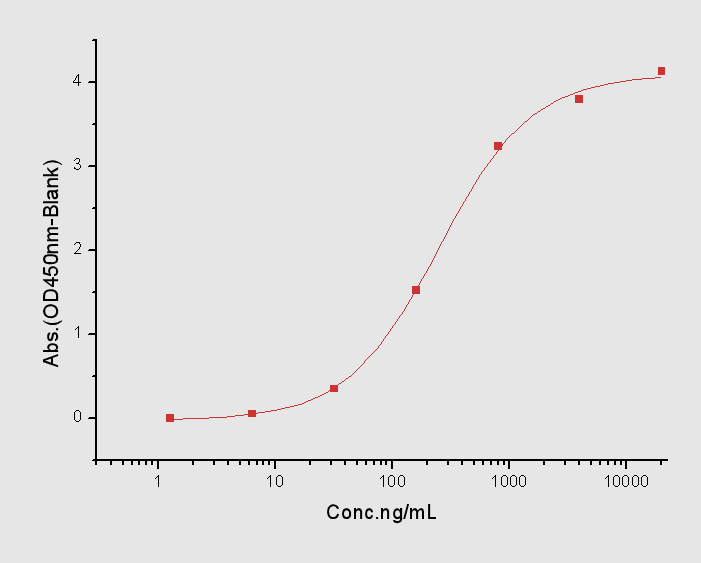 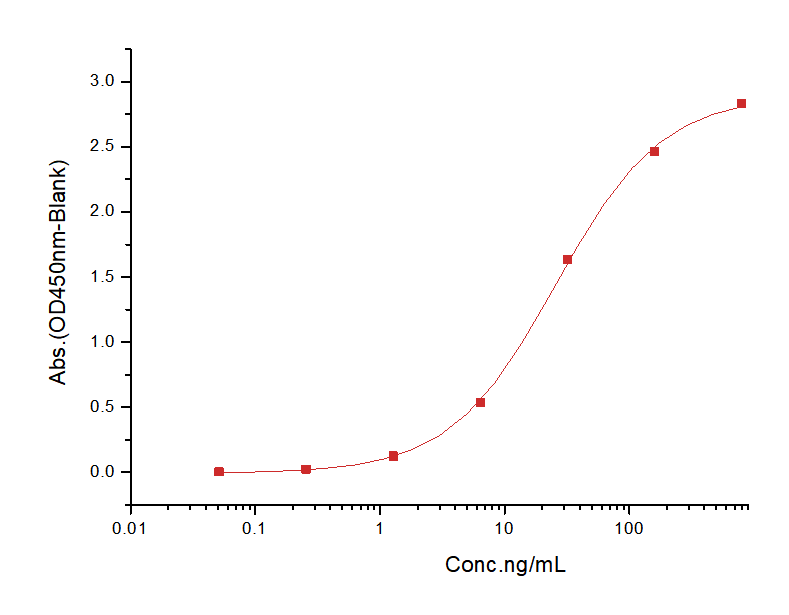 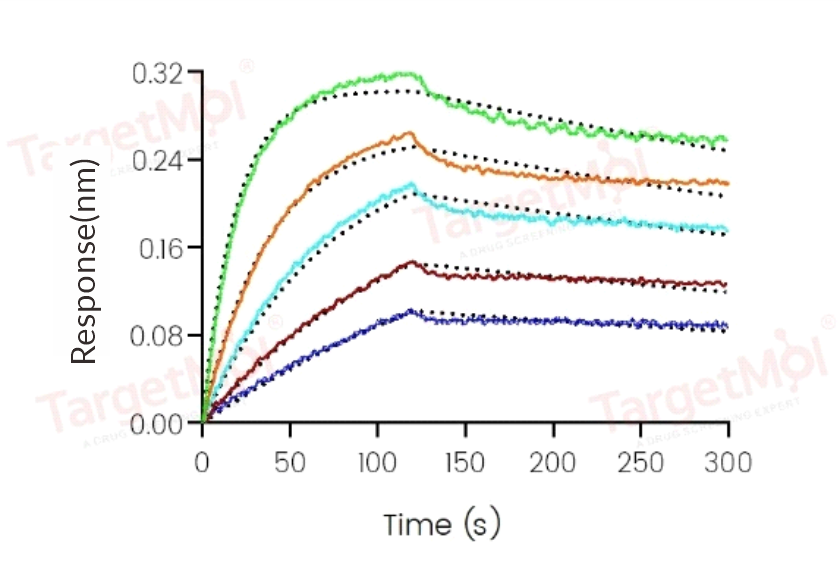 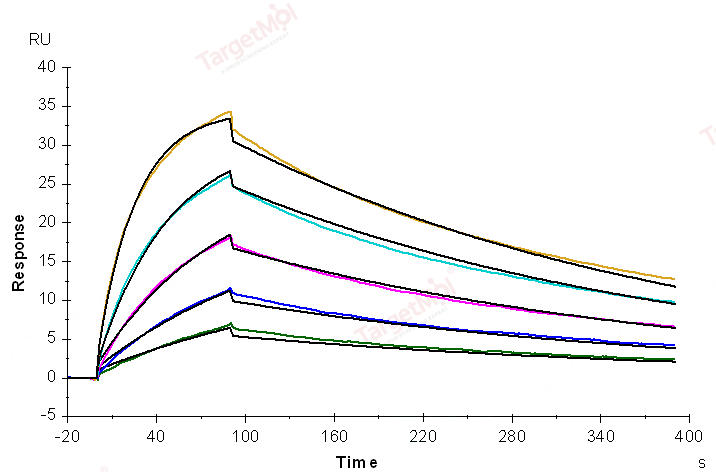 |
| Description | PD-1 Protein, Human, Recombinant (His) is expressed in HEK293 mammalian cells with His tag. The predicted molecular weight is 17.4 kDa and the accession number is A0A0M3M0G7. |
| Species | Human |
| Expression System | HEK293 Cells |
| Tag | C-His |
| Accession Number | Q15116 |
| Synonyms | SLEB2,programmed cell death 1,PD-1,PD1,hSLE1,hPD-l,hPD-1,CD279 |
| Construction | A DNA sequence encoding the extracellular domain (Met 1-Gln 167) of human PD1 (NP_005009.2) was expressed with a C-terminal polyhistidine tag. Predicted N terminal: Leu 25 |
| Protein Purity | > 95 % as determined by SDS-PAGE. > 90 % as determined by SEC-HPLC. 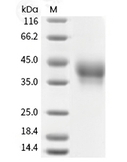 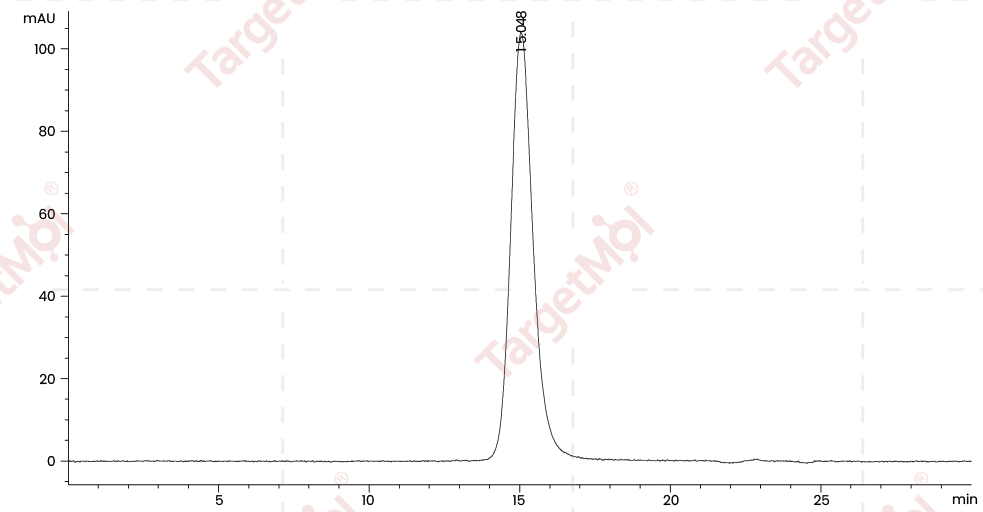 |
| Molecular Weight | 17.4 kDa (predicted); 41.1 kDa (reducing condition, due to glycosylation) |
| Endotoxin | < 1.0 EU/μg of the protein as determined by the LAL method. |
| Formulation | Lyophilized from a solution filtered through a 0.22 μm filter, containing 50 mM MOPS, 500 mM NaCl, pH 7.0.Typically, a mixture containing 5% to 8% trehalose, mannitol, and 0.01% Tween 80 is incorporated as a protective agent before lyophilization. |
| Reconstitution | A Certificate of Analysis (CoA) containing reconstitution instructions is included with the products. Please refer to the CoA for detailed information. |
| Stability & Storage | It is recommended to store recombinant proteins at -20°C to -80°C for future use. Lyophilized powders can be stably stored for over 12 months, while liquid products can be stored for 6-12 months at -80°C. For reconstituted protein solutions, the solution can be stored at -20°C to -80°C for at least 3 months. Please avoid multiple freeze-thaw cycles and store products in aliquots. |
| Shipping | In general, Lyophilized powders are shipping with blue ice. |
| Research Background | Programmed cell death 1, also known as PDCD1, is a type I transmembrane glycoprotein, and is an immunoreceptor belonging to the CD28/CTLA-4 family negatively regulates antigen receptor signaling by recruiting protein tyrosine phosphatase, SHP-2 upon interacting with either of two ligands, PD-L1 or PD-L2. PD1 inhibits the T-cell proliferation and production of related cytokines including IL-1, IL-4, IL-10 and IFN-γ by suppressing the activation and transduction of PI3K/AKT pathway. In addition, coligation of PD1 inhibits BCR-mediating signal by dephosphorylating key signal transducer. PD1 has been suggested to be involved in lymphocyte clonal selection and peripheral tolerance, and thus contributes to the prevention of autoimmune diseases. Furthermore, PD1 is shown to be a regulator of virus-specific CD8+ T cell survival in HIV infection. As a cell surface molecule, PDCD1 regulates the adaptive immune response. Engagement of PD-1 by its ligands PD-L1 or PD-L2 transduces a signal that inhibits T-cell proliferation, cytokine production, and cytolytic function.Cancer ImmunotherapyCo-inhibitory Immune Checkpoint TargetsImmune CheckpointImmune Checkpoint Blockade: Blocking AntibodiImmune Checkpoint Blockade: PD1 / PDCD1 / CD2Immune Checkpoint Detection: AntibodiesImmune Checkpoint Detection: ELISA AntibodiesImmune Checkpoint Detection: IHC AntibodiesImmune Checkpoint Detection: WB AntibodiesImmune Checkpoint ProteinsImmune Checkpoint TargetsImmunotherapyPD1 / PDCD1 / CD279 Immune CheckpointPD1 / PDCD1 / CD279 Immune Checkpoint AntibodPD1 / PDCD1 / CD279 Immune Checkpoint ProteinTargeted Therapy |

Copyright © 2015-2025 TargetMol Chemicals Inc. All Rights Reserved.